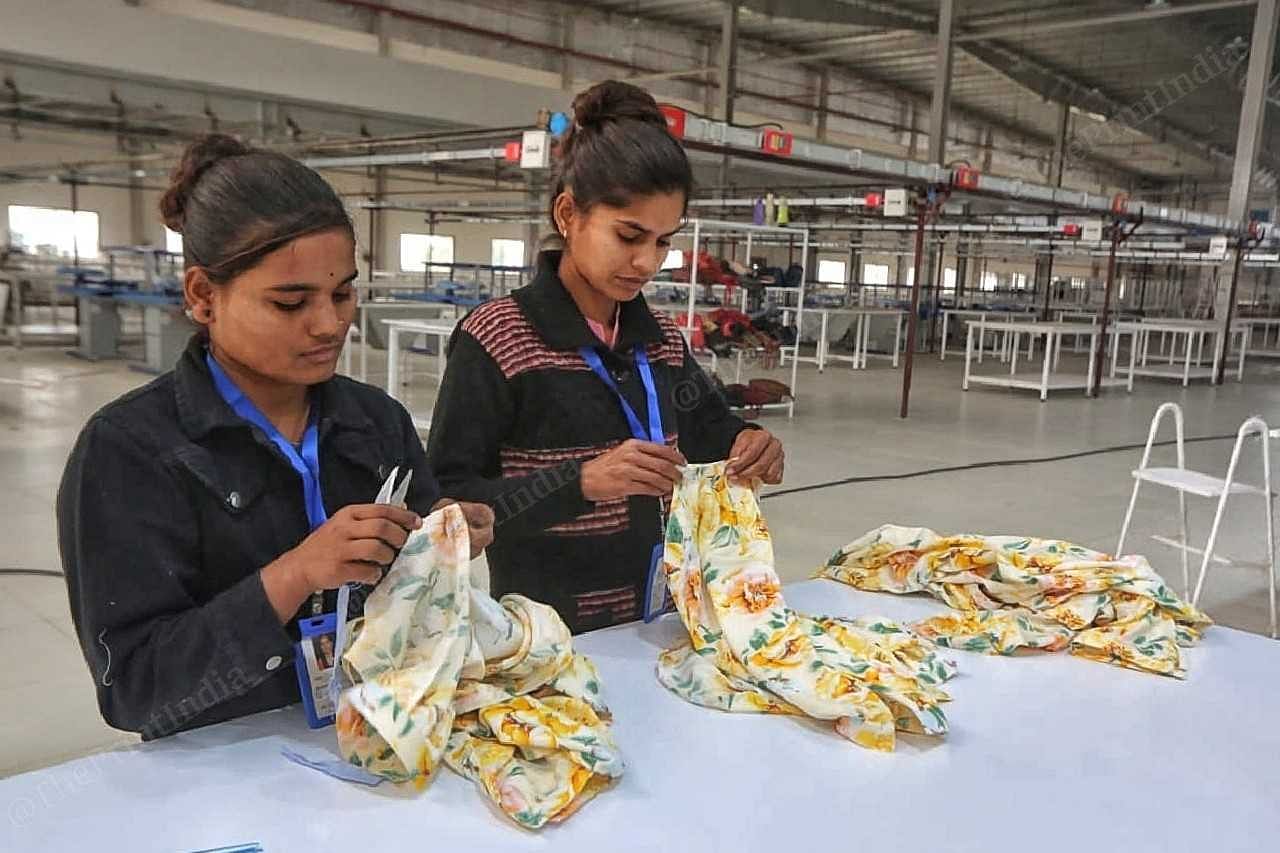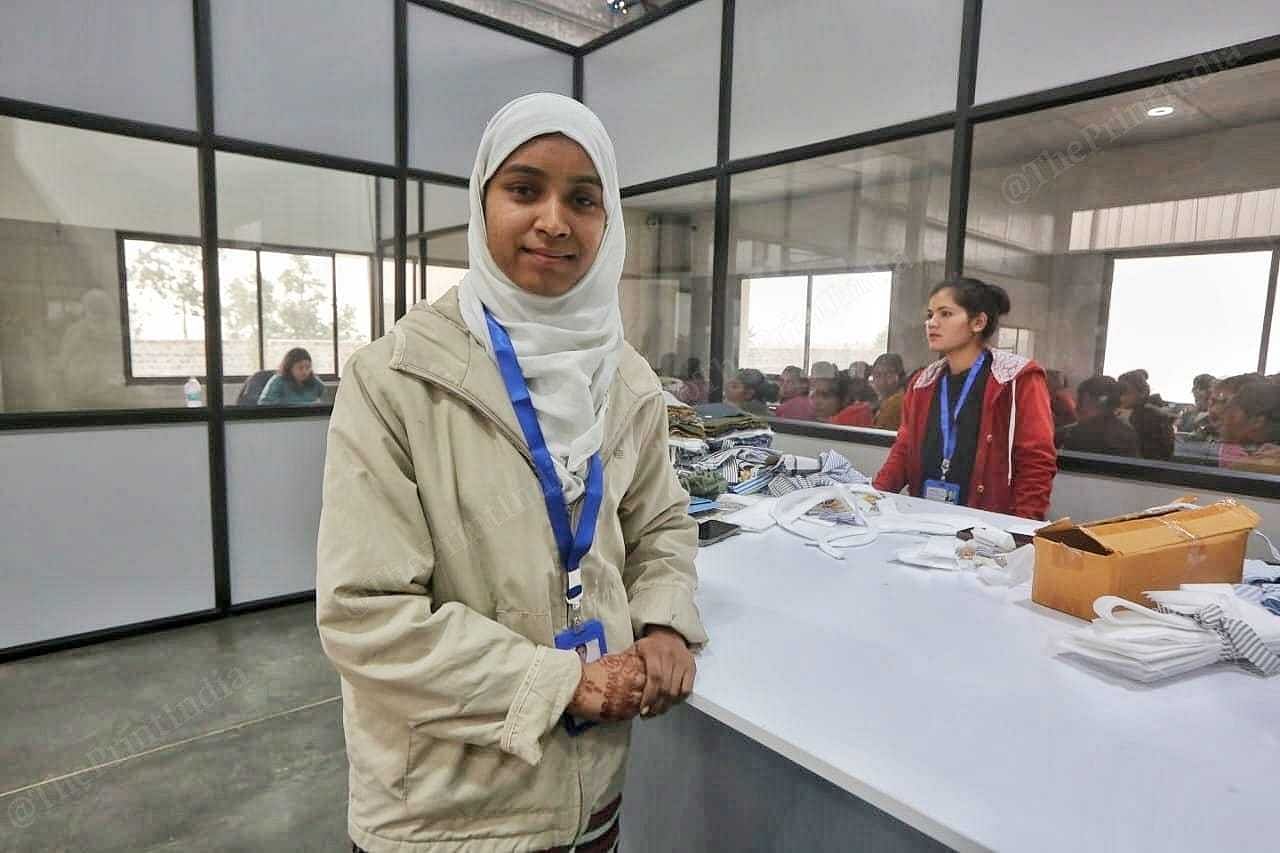IOn the floor of the sprawling factory in Bhopal’s Acharpura, over 450 women are learning to measure and stitch garments to be exported to other countries. Each one of them has crossed the threshold from home to workplace for the first time. The whistle and click of sewing machines drown out all other noises. But women are focusing on their work.
“I kissed my daughter’s forehead and thanked God for giving me this opportunity. Looks like things will get better in my life now,” says 27-year-old Seema as she flattens a strip of cloth and turns the sewing machine. She joined the workforce just two months ago, in December 2022, and is still part of the factory’s apprentice program.
In the industrial village of Acharpura in Madhya Pradesh, thousands of women from nearby shanties and villages have discovered financial independence by working in the state’s nascent but growing garment manufacturing industry. Most have taken up jobs at a new factory run by Gokaldas Exports Ltd in Bengaluru, where Seema works.
Read also:
When Gokaldas came to Acharpura
Gokaldas is one of the largest apparel manufacturers in India and exports to more than 50 countries. Its factory in Acharpura was inaugurated by Chief Minister Shivraj Singh Chouhan in January. Promise that it will provide 5,000 direct and 10,000 indirect jobs.
Seema, who hails from the nearby Karadi village, earns a minimum wage of around Rs 12,000 per month. This is more than what she earned as a laborer on a construction site – a job she was forced to take after her husband’s untimely death due to an illness.
The factory came up in a record 15 months on the 10-acre property after the Madhya Pradesh State Industrial Development Corporation leased it to Gokaldas in 2021.
Once Seema and the other women complete their three-month training programme, operations will begin in full swing.
learn, earn, grow
In this factory women are taught sewing, tailoring, ironing and washing clothes. There’s a steady hum of activity on the floor: rolls of laundry are opened and straightened on long tables as giant washing machines rumble in the background. In another corner, a group of women run their fingers along hemlines, looking for loose threads and blemishes in clothes.

A lady supervisor guides the trainees as and when required.
textile sector, Accounts Accounting for more than two per cent of India’s GDP, it is also the second largest provider of employment after agriculture – especially for women, who account for 60-80 per cent of its workforce by 2021. The factory floor in Acharpura reflects this trend, as 90 per cent of the workforce are women.
“These women are from Acharpura and nearby villages. they are unskilled; Most are using a sewing machine for the first time. Before starting its operations, the company is teaching them how to work,” says floor supervisor Himanshi Sharma, who has been in the apparel business for four years and hails from Indore.
Read also:
ray of hope for women
It may not be 25-year-old Khushnuma Ali’s dream job, but it pays the bills and helps her contribute to household expenses. Despite having a master’s degree in social work, he could not get a job. Finally, in November, when she returned home dejected after several rejections, a friend told her about a garment factory being set up in an industrial area.

She came the very next day and met the Indore manager. “I told [Sharma] that I was desperately looking for a job, and that I was ready to make clothes despite my varied work experience,” she recalls. Ali was quickly hired, and she joined the factory on 25 December. joined in. “I’m learning the art of sewing, and I feel more confident now,” she said.
The garment factory is proving to be helpful for the local economy. Newly constructed dhabas, small hotels and tea stalls have come up on the road leading to the factory. The mood is upbeat.
“Even the guards and pantry staff are local residents. Soon we will start the second phase of production [cutting fabric]Which will generate at least 2,000 direct jobs,” said Gopal Nandan, commercial head, north zone.
On the factory floor, 45-year-old Asha, dressed in a Bengali sari and a large bindi, stands well ahead of the other trainees. As a young woman, sewing was her passion, but family and children took priority. Her love for sewing faded with time but came back when she heard about the garment factory.
“All I knew was that I was sewing. And now, my skill can help me earn a livelihood. I will also contribute and live life in my own way. Financial independence is an important step towards equality for women.
(Edited by Zoya Bhatti)